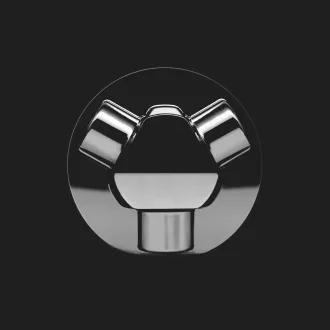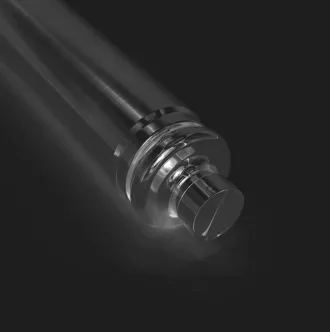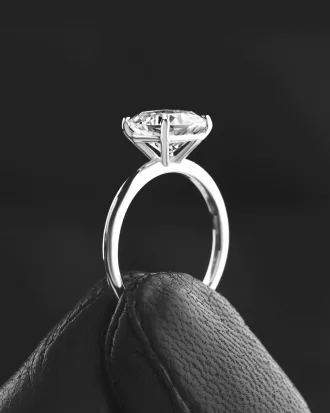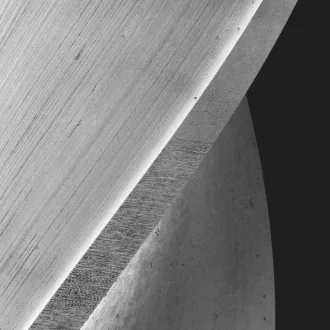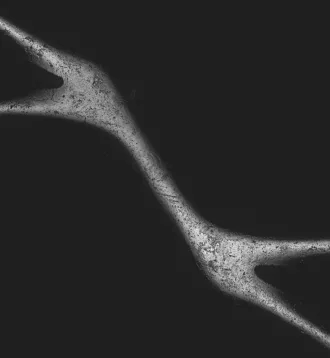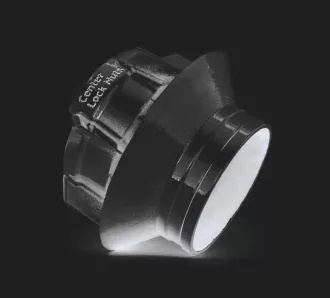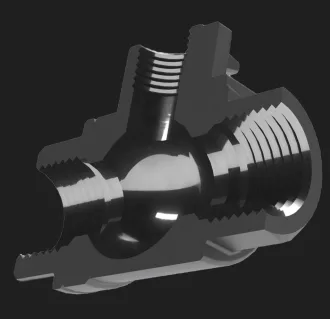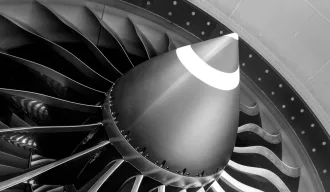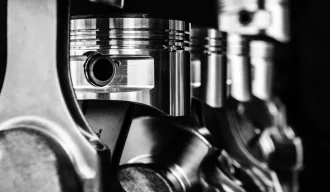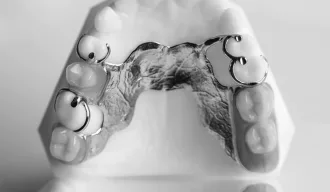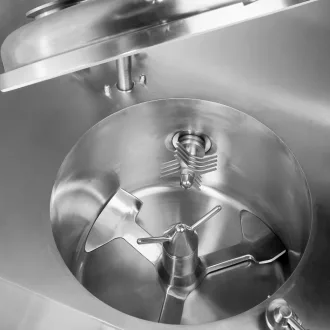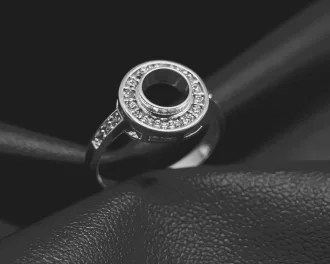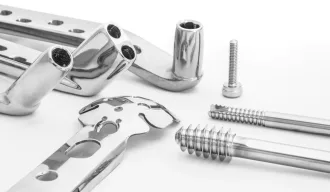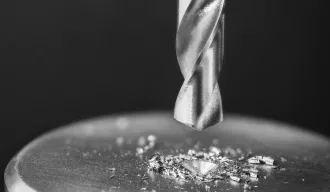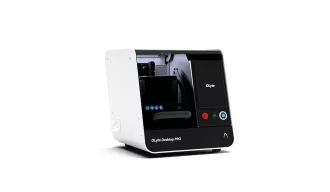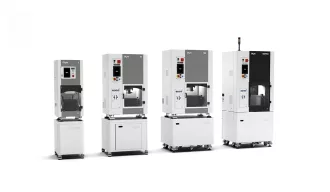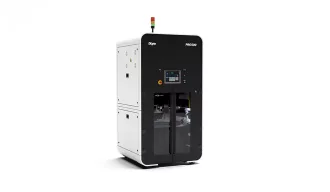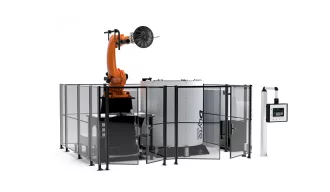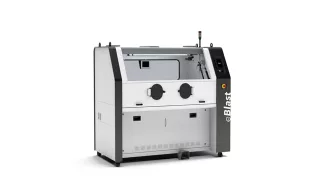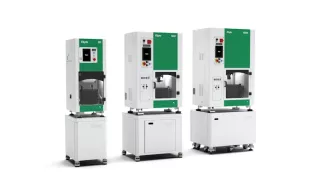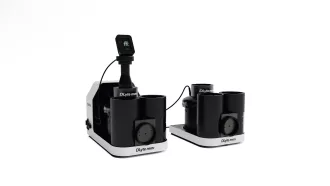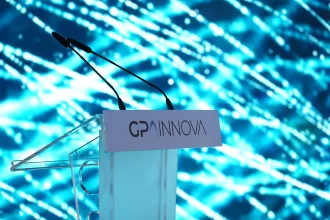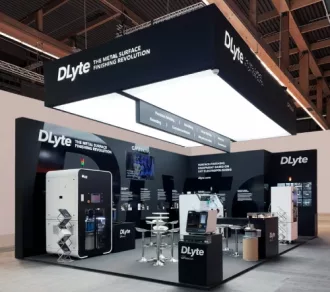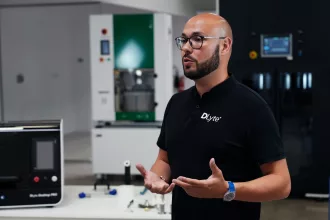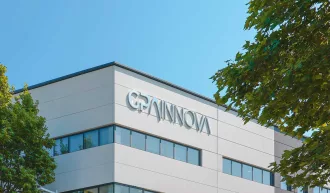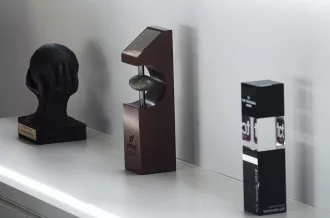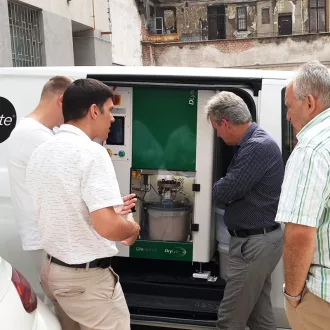GPAINNOVA’s client is a European-based company specializing in the design and manufacture of high-quality cutting tools.
THE PROBLEM
According to the customer, their previous mechanical surface finishing processes were not effective in polishing tungsten carbide, as this material is too hard to be eroded. As a result, attempts to improve surface quality led to uncontrolled rounding of the edges. On the other hand, chemical and electrochemical processes corrode the material, causing the cobalt binder to be released in a reaction known as leaching. This led to the loss of the binder metal, making the structure collapse during service. In the provided picture, the black areas represent empty spaces where the cobalt binder has been removed due to the corrosion from the surface finishing process.
To address these issues, the company identified the need to automate the surface finishing of endmills to enhance repeatability, quality, and reduce production costs.
Before adopting GPAINNOVA’s solution, the customer used drag finishing to round the edges and mechanical abrasive finishing to hone the edges. However, this process applied aggressive forces to the pieces in a short time, leading to inconsistent results within the media’s lifespan. Continuous monitoring was required to replace the media partially to maintain the desired results. Additionally, this resource-intensive procedure relied heavily on human intervention to ensure quality, resulting in high scrap rates.

THE GOAL
The client was seeking ways to improve production capacity, achieve homogenization in cutting edges, enhance the quality, and reduce the cost of surface finishing endmills. The primary goal was to surface finish the tools to achieve higher quality and longer lifecycles.
The specific target was to achieve precision cutting edge-controlled rounding with a maximum radius of 10 μm (394 microinches) and a certain reduction in roughness of the flute to reach a Sa goal of 0.16 μm (6 microinches). Additionally, there was a desire to enhance the aesthetics of the tool, which would add further value to the end product.
THE SOLUTION
GPAINNOVA conducted various tests to achieve the desired technical specifications of the surface while minimizing both total process time and cost.
With the DryLyte Technology, the customer successfully replaced the inconsistency of drag finishing process with an automated surface finishing step. DLyte performs controlled and uniform edge rounding and flute smoothing and without cobalt leaching of up to 48 pieces per cycle with an estimated total time of 5 minutes including for loading and unloading.
Are you interested in learning about the production increase, the comparison of previous and current costs per piece, or how DLyte can boost your business? Download now our free case study!

TECHNICAL BENEFITS
01. Controlled rounding (radius up to 10 μm) and surface integrity
02. Without leaching effect
03. Geometry and tolerance preservation & homogeneous results across the piece
04. Best-in-class concerning surface roughness (Sa under 0.16 micrometers)
05. Stable results among different batches within the electrolyte lifespan
OPERATIONAL BENEFITS
01. Reduced footprint
02. Time and cost reduction
03. Exposure of workers during process and maintenance
04. Handling and storage of media
05. No need for multistep processes
06. Easy waste management
